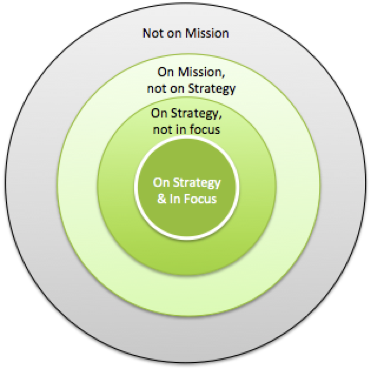Retooling Your Organization for the Road Ahead

What does innovation really mean?
It seems most people think innovation means a shiny new object — a product, a service, or an original pricing model that shakes up the markets. But in today’s world, where markets are being roiled and redrawn by massive shocks, innovation means rethinking everything from workflows to value propositions. An innovator must map a fresh course though all of this uncertainty to find a niche or customer need that the company can uniquely speak to and serve.
This is where we get to run meaningful experiments, test our assumptions and tweak our offerings. We are continually learning and sharpening our customer value propositions. To succeed, it is imperative that we focus on customer needs and finding the right product/market fit. That is the true destination: the why, when, and where and what of innovation.
But how do we get there?
Think about innovation as a car, with internal and external systems. External innovation is the frame, body, wheels and even the suspension and steering. Internal innovation is the engine — the machine. It drives the car and gives it power and speed. Without it, the car will not actually go anywhere, no matter how sleek and aerodynamically designed.
The methods, means, and mechanics of retooling internal innovation inside an organization is what I call the how.

Retooling for Innovation in a Time of Rapid Change
Most companies—even startups once they start to grow—start building structures to help them operate more efficiently and to stay in compliance with the legal and regulatory layer. This logic, left unchecked, eventually creates barriers to innovation.
It’s an old paradox, because while bureaucracy is designed to cope with increased complexity, it can also become an innovation killer. It’s also not a very productive structure to lead with in times of rapid change and uncertainty, because it is designed to keep you on a steady course, making it hard to pivot or act quickly on new information. In fact, bureaucracies can be learning-resistant, and unable to easily uptake new data.
But when everything is changing around you, you have to change, too, or risk collapse. This requires coordination, collaboration and trust. This can be a big shift in how many of us work but isn’t as unstructured as it might seem. Innovation isn’t a wild west where anything goes, it’s creativity within constraints, with a clear structure to test both our ideas and decisions.
Organizations with a lot bureaucratic layers can manage to push out a few innovations over a long period of time, but to innovate quickly and consistently, they have to break down some of these structures, creating linkages within and building cross-functional teams that can coordinate across the organization, allowing a speedier and more agile process to take root.
A Bias for Action
Among the leadership qualities that Jeff Bezos prizes is what he describes as a “bias for action”, which means taking calculated risks and empowering people to make decisions. In fact, Bezos’ e-commerce empire is an agglomeration of tiny risks and calculated bets, driven by a relentless focus on customers, rather than competition.
This focus provides the decision-making structure that allows Amazon to constantly innovate, learn and improve, thus constantly improving the customer experience and building lasting brand fidelity.
Customer-validated learning is the real currency of such innovative cultures—in this context there is no objectively ‘right’ or ‘wrong’ choice, anything that moves us closer to understanding and meeting the customers true need has value.
How do leaders today create a similar culture within their organization?
How can they realign and retool their organization to have a bias for action?

Aligning for Yes
Our friends Hugh Molotsi and Jeff Zias share in their book, Intrapreneurs Journey, aligning for yes removes the frictions that can slowly grind innovations to a halt. This can mean improving processes, empowering and coaching leaders, and setting up decision-making protocols and standards, including fast track approval parameters for teams to follow when experimenting.
Marketing, IT, and legal are brought in to help develop these standards and to negotiate a working process that allows innovators to run experiments within defined parameters without any interference, or to obtain the necessary approvals or buy-in beforehand. Everyone knows what to expect so there are few unnecessary surprises or disruptions.
Aligning for yes means putting structures in place to help guide innovators in testing their ideas and thinking from the very beginning. This prevents biased decision-making and instead creates a data-driven culture.
There are clear standards and guideposts to take intrapreneurs from ideation to experimentation all the way through to producing marketable products and services. This empowers innovators to make their own tough choices and also to find a way to make things happen. Constraint does indeed produce creativity.
These leaders empower their internal founders:
- They celebrate learning moments and implement data-based decision making
- They focus on KPI’s and goals rather than methods and means
- They bring people that would not normally work with each other together
Standardizing Decision-Making
Retooling involves optimizing and improving processes internally — from the way you work to how decisions are made. When it comes to speeding up and gaining proficiency to conduct multiple experiments you need a standardized decision-making process for vetting ideas and pushing forward only the most valuable and feasible.
Organizations tend to evaluate ideas through a single lens, which can be misleading and inefficient. An idea that’s mission-focused might not be profitable or could fall outside your core competency. The solution is to put in place a mechanism where ideas are evaluated from the start according to a comprehensive matrix.
In their book, Hugh and Jeff also mention a tool called an in-focus graph, represented visually with four concentric circles. This helps keep innovators on track early in the ideation and experimentation stage and keeps energy focused on ideas that are aligned from the start. The center is the “bullseye” or sweet spot where strategy, mission, and current focus all align to create the ideal conditions for a successful innovation.
This creates clear guidelines and criteria to spur on innovations that are likely to drive profitable growth while supporting the overall strategy and current focus. In times of rapid change, these tools should be maintained and updated as frequently as needed to reflect the current state. As you update your in-focus graph to reflect new realities and priorities, different projects may come into focus while others fall out.
Standardized decision making also ensures that innovators can test their ideas while staying clear of legal issues and protecting the brand. Cross-collaboration and negotiation with marketing, IT and legal can yield working agreements and quick approval formats and templates to standardize and fast track the decision-making process, allowing innovators the space to conduct experiments and learn quickly.
With a few adjustments, using simple tools and methods, the same systems that guarantee business continuity can be aligned to support innovation.
Big Ideas, Small Steps
Many people are surprised to learn that Internal innovation doesn’t necessarily mean a major upheaval or massive reorganization. Lean Startup methodology is a systematic, measured, data-based approach that favors small changes over chaotic overhauls. Tiny tweaks and adjustments within can make a huge difference, and in many cases the obstacles to innovation are very easy fixes.
Innovation from Within
The takeaway is simple: It’s time to retool your internal culture and processes because the old rules don’t apply anymore. Make this a priority so you can ensure that your innovation efforts do not go to waste.
When organizations rush ahead to create the next shiny object that they call innovation, but without the right rigor in their internal systems, they can easily end up damaging their reputation and credibility. This is what we call “innovation theater” because the chassis might look great but there’s no engine inside. When these innovation efforts stall, everyone loses — especially the customer.
After these efforts fizzle out, leaders tend to conclude that “innovation” is nothing but a buzzword after all. Those tasked with driving it eventually run out of inspiration as they encounter obstacle after obstacle. Innovation can even get a bad rep as it comes to be associated with promises that never materialize, stalled projects, and setbacks. People give up and the creative impulse is stifled. Under those conditions, ideation, the source of innovation, can’t happen.
Don’t let this scenario play out for you. More than you think is riding on it. Now is the perfect time to put in place the right structures and processes for ongoing innovation. In many ways the current crisis is just training for what is coming next.
Change is the new normal for the foreseeable future given all that our world must adapt to now, from large scale changes like climate change to shifting demographics to unprecedented consumer behaviors.
Many people today are feeling overwhelmed or even paralyzed by the magnitude of this global shift. The tools described above can help any organization cope with all of this uncertainty by breaking complexity down into small, manageable chunks.
With the right tools and structure in place, work groups can once again get excited and inspired by innovation — and where they can go on the open road ahead.

